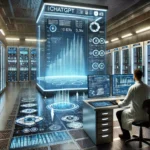What is a Collider?
A collider is like a cosmic kitchen where scientists cook up subatomic particles to understand the fundamental building blocks of our universe.
The Basics
Imagine you’re trying to peek into the tiniest, most mysterious corners of nature. That’s what colliders do—they bring together two streams of particles moving in opposite directions and watch them collide. These collisions are like a high-energy dance that reveals secrets about the subatomic world.
Differences from Other Particle Accelerators
Compared to other particle accelerators, which might just shoot particles at a stationary target, colliders have a unique setup where two beams of particles collide head-on. This is like having two trains racing towards each other on the same track and then crashing into one another, but with subatomic particles instead.
Types of Colliders
There are two main types: fixed target setups and collider setups. In a fixed target setup, you have one beam hitting a stationary target, while in a collider setup, both beams come together. The collider setup is like having two trains collide head-on, which gives it an edge because the energy available for producing new particles is higher due to special relativity.
Center of Mass Energy
The center of mass energy (Ecm) is a key concept here. It’s the total energy available in the collision and can be calculated using the energies from each beam. This was first demonstrated with hadron colliders, which are like the ultimate chefs in this cosmic kitchen.
Historical Milestones
In 1968, construction began on a proton accelerator complex at Fermilab that would eventually become the Tevatron collider. In October 1985, it recorded its first proton-antiproton collisions at a center of mass energy of 1.6 TeV, making it the highest energy collider in the world at that time. By the end of its operation in 2011, the collider had achieved luminosities exceeding 430 times its original design goal.
The Current King: The Large Hadron Collider
Since 2009, the Large Hadron Collider (LHC) at CERN has taken over as the most energetic collider in the world. It currently operates at a center of mass energy of 13 TeV in proton-proton collisions. This is like having two trains collide with an incredible amount of force, revealing new particles and phenomena that were previously unknown.
Future Prospects
More than a dozen future particle collider projects are under consideration to explore Higgs/electroweak physics and discoveries at the post-LHC energy frontier. These colliders will be like the next generation of chefs, pushing the boundaries of what we know about our universe.

So, the next time you hear about a collider, remember it’s like a cosmic kitchen where scientists cook up subatomic particles to understand the fundamental building blocks of our universe. These colliders are not just tools; they’re windows into the very essence of reality.
You want to know more about Collider?
This page is based on the article Collider published in Wikipedia (retrieved on January 30, 2025) and was automatically summarized using artificial intelligence.




